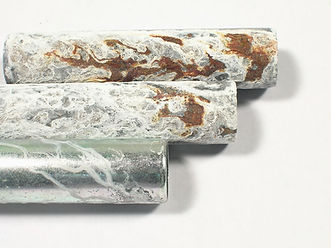
Automotive Interior Testing
Fogging

Fogging testing of automotive interior components evaluates the tendency of materials, such as plastics, textiles, and adhesives, to release volatile substances that condense on cool surfaces like windshields. Fogging can impair visibility and compromise safety, making fogging testing crucial for manufacturers to ensure the interior environment remains clear and safe.
The test is performed by placing material samples in a controlled environment, typically at elevated temperature, to accelerate the release of volatile compounds, which then condense on a cooled surface, such as a glass or aluminum plate. This plate is then analyzed, either gravimetrically, or optically. Gravimetric testing measures the change in weight of the condensed film. Optical techniques, such as reflectometric testing, assesses the haze level on the surface of the plate. Fogging tests help manufacturers select low-emission materials, improving both safety and the overall quality of the vehicle interior.
Common Test Methods and Standards
General Motors GMW 3235 Fogging Characteristics of Trim Materials FZ/T 60045 Textile Trim Materials in the Interior of Automobiles, Test Method for Fogging Characteristics
GB/T Rubber or Plastics Coated Fabrics, Determination of Fogging Characteristics of Trim Materials in the Interior of Automobiles
Honda HES D6508 Fogging of Interior Materials for Automobiles
ISO 6452 Rubber, or Plastics, or Coated Fabrics, Determination of Fogging Characteristics of Trim Materials in the Interior of Automobiles FCA/Stellantis LP-463DB-12-01 Fogging Resistance of Interior Materials – Determination of
SAE J275 Test Method for Determining Window Fogging Resistance of Interior Trim Materials
SAE J1756 Determination of the Fogging Characteristics of Interior Automotive Materials
Volvo STD 420-0003 Fogging of Organic Materials
Why is testing necessary for automotive interior components?
Types of Materials Commonly Tested
Seating •Leather (natural and synthetic) •Fabric upholstery •Foam padding •Seat frames and mechanisms •Stitching and thread •Heated/ventilated seal components Dashboard •Plastics (ABS, PVC, polyurethane) •Soft-touch coatings •Plated plastic trim •Displays •Vents and HVAC controls •Adhesive layers and bonding materials Instrument Panel •Cluster displays •Buttons, knobs, and switches •Touchscreen surfaces •Backlighting components •Haptic feedback mechanisms Center Console and Door Panels •Plastic trim and bezels •Leather or synthetic coverings •Cup holders, storage compartments •Electronic components (USB ports, chargers) •Armrest materials and padding Wood, metal, or carbon fiber accents •Window switchgear and buttons •Interior door handles and lock mechanisms Steering Wheel •Leather wrapping or synthetic materials •Metal and plastic structural elements •Control buttons •Heated steering components •Airbag cover materials Flooring and Mats •Carpet fibers •All-weather rubber mats •Sound-dampening materials •Floor insulation layers Roof Liner •Fabric liners •Sunroof or panoramic roof trim •Insulation and soundproofing materials Interior Lighting •LEDs and backlighting modules •Ambient lighting strips •Dome and reading lights

